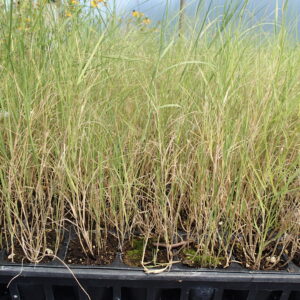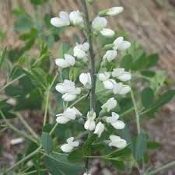$8.00
Baptisia alba Wild White Indigo, Organically Grown Native Perennial Plugs, Native Wildflowers, Native Pollinator Support Plants
There is a required minimum purchase of 5 individual plant plugs for this species. There are 50 individual plant plugs of this species in a tray.
Wholesale pricing is based on quantity. The cost PER individual plant is:
5 or more $8.00 each
25 or more $3.50 each
50 or more $1.85 each
300 or more $1.80 each
500 or more Call
For Shipping, Planting and additional FAQ’s please see “About our organically grown native plug trays “.
See all available Native Perennial Grasses & Organically Grown Plug Trays
Order Minimum
There is a minimum order total of $150.00.
before tax (VA residents only) and shipping.
There are NO EXCEPTIONS.
Description
Baptisia alba Wild White Indigo, Organically Grown Native Perennial Plugs, Native Wildflowers, Native Pollinator Support Plants
Attractive Flowers:
Average – Dry soil:
Average to moist soil:
Average Wildlife Value:
Beneficial Insects:
Butterflies:
Drought Tolerant:
Drought tolerant:
Dry-Moist Soil:
Full – Part Sun (6+ hours of sun):
Herbaceous plant:
Hummingbirds:
Moist Soil:
Native To Mountain Regions:
Native to Piedmont Regions:
Part Sun – Part Shade :
Perennial:
Pollinator support:
Sandy soil, coarse texture:
Songbirds:
Status not yet determined- :
Threatened / Endangered:
Full Sun:
Botanic Name (s): Baptisia alba
Common Name(s): Wild white indigo, white wild indigo
Mature height :2-4ft
Mature spread:2-4ft
Flower Color:white, cream
Bloom Time:April-July
Fruit:pod
Sun Exposure: Full Sun Part Sun
Soil moisture: Dry Average Moist
Soil Type:
Loamy Soil- mostly silt, sand, some clay
Sandy soil, coarse texture
Native Habitat: Open woods, alluvial thickets, streambanks, floodplains
Notes: Tolerates poor soils, flowers vary showy, shrublike form
Average Wildlife Value: Beneficial Insects Butterflies Hummingbirds Songbirds
FACU- Upland
Native To Mountain Regions
Native to Piedmont Regions
Threatened / Endangered:
Native Perennial/Wildflower
Baptisia alba, commonly called white wild indigo or white false indigo, is a herbaceous plant in the bean family Fabaceae. It is native in central and eastern North America.
This 2-4 ft., mound-shaped perennial holds its white, pea-like flowers in erect clusters. Velvety, trifoliate leaves turn from bluish-gray to black in the fall. A bushy perennial with smooth leaves and white or cream-colored pea flowers in stiffly erect clusters; stem covered with whitish bloom. Clusters of large, black seedpods often remain attached to the naked winter stems.
This showy legume, long known as B. leucantha but now as B. alba, often stands out above surrounding prairie grasses. Many species of this genus contain a blue dye that resembles indigo and becomes noticeable in autumn as the plants dry out and blacken. Large-bracted Wild Indigo (B. bracteata var. leucophaea) has two large stipules at the base of 3-parted leaves, giving the effect of five leaflets rather than three.
Benefit
Use Ornamental: Used in gardens and grasslands.
Warning: This plant has been fatal to cows and can be irritating to humans if ingested. Sensitivity to a toxin varies with a person’s age, weight, physical condition, and individual susceptibility. Children are most vulnerable because of their curiosity and small size. Toxicity can vary in a plant according to season, the plant’s different parts, and its stage of growth; and plants can absorb toxic substances, such as herbicides, pesticides, and pollutants from the water, air, and soil.
Conspicuous Flowers: yes
Interesting Foliage: yes
Value to Beneficial Insects
Special Value to Native Bees
Special Value to Bumble Bees
Baptisia alba Wild White Indigo, Organically Grown Native Perennial Plugs, Native Wildflowers, Native Pollinator Support Plants
See all organically grown native Wildflowers & Pollinator Support Plants
You may also like…
-

About Organically Grown Native Plug Tray material, now available for preordering.
$0.00 Add to cart -

Rudbeckia subtomentosa Sweet Black Eyed Susan, Native Perennial Plant Plugs, Organically Grown
$7.50 Add to cart -

Pycnanthemum virginianum, Virginia Mountain Mint, Native Perennial Plant Plugs, Organically Grown
$7.50 Add to cart




